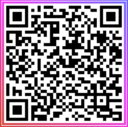Posted on February 16, 1998
e-mail.. A 123 Guide for Writing a Winning Electronic Mail
![]()
Never put anything in e-mail that you wouldn’t want to become public knowledge. You can’t trust e-mail’s security and therefore you shouldn’t use it when security is an issue.
Make sure that your email message isn’t abusive, harassing, threatening, or bigoted. A good rule to follow is if a recipient complains about the e-mail you are sending, STOP. E-mail can be traced to its originating machine. If there are complaints about your behavior you could lose your account.
Do not send “junk” email. This is very poor netiquette and your account may be terminated for this offense. If someone didn’t ask for the information that you have, don’t send it.
Be careful how you word your messages. When you discuss things with someone in person, that person can judge what you are saying by your body language and facial expressions. With e-mail you don’t have these visual cues and thus your message could be misunderstood. This is why smileys came into being :-).
Use mixed case. If you use all upper case it sounds harsh, like shouting. USE UPPERCASE FOR EMPHASIS ONLY!
Don’t use special features of your terminal such as bold, italics, etc. These frequently send a string of control characters, which wreak havoc on some terminals.
Read your message before you send it and decide if you’ll regret it in the morning. Always remember once you send it, you can’t get it back.
E-mail is easily forwarded to someone else. Although this is convenient, it is not always appropriate. If you are unsure, ask the sender before you forward a message.
E-mail replies may go to more people than you realize. When replying to a message, be sure to look at the list of recipients.
E-mail takes up computer space, so delete messages you no longer need.
If you only read a few messages a day you will probably remember them for a few days. but people who receive dozens of messages need reminders. Use the forward message option and include the relevant portions of the text to help clue them in to the context of previous messages.
10 Basic Rules in Writing a Winning Email
In today’s fast-paced digital world, email has become the primary mode of communication for both personal and professional purposes. Whether you’re applying for a job, reaching out to a potential client, or simply networking, crafting a winning email is crucial to ensure your message is heard and well received. Here are some essential tips to help you write a winning email that grabs attention and gets results.
- Start with a Strong Subject Line: The subject line is the first thing recipients see, so make it compelling and concise. It should summarize the purpose of your email and entice the recipient to open it. Use action words and keep it short, ideally under 50 characters.
- Personalize your Greeting: Address the recipient by name and tailor your greeting based on your relationship with them. A personalized greeting shows that you’ve taken the time to do your research and establishes a connection right from the start.
- Keep it Concise and Clear: Busy professionals receive countless emails daily, so it’s essential to get to the point quickly. Keep your email concise and avoid unnecessary details. Use short paragraphs and bullet points to make it easier to read and scan.
- Clearly State your Purpose: State your purpose or request upfront in a clear and direct manner. Be specific and avoid ambiguity. Make it easy for the recipient to understand what you want or what action they need to take.
- Highlight the Benefits: If you’re making a proposal or requesting something, highlight the benefits for the recipient. Explain how your proposal can solve their problem or improve their situation. Focus on the value you can provide to capture their interest.
- Be Professional and Polite: Maintain a professional tone throughout your email. Use proper grammar and spelling, and avoid using slang or informal language. Show respect and politeness, even if you’re addressing a complaint or disagreement. A courteous tone goes a long way in building relationships.
- Provide Relevant Context: If necessary, provide some background information or context to help the recipient understand the purpose of your email. However, be mindful of keeping it concise and relevant. Avoid overwhelming the reader with unnecessary details.
- Use a Call to Action: Clearly state what you want the recipient to do or how you expect them to respond. Use a call to action to guide them and make it as easy as possible for them to take the desired action. Be specific about timelines and any necessary steps they need to follow.
- Proofread and Edit: Before hitting the send button, proofread your email for any grammatical or spelling errors. Read it aloud to ensure it flows smoothly and sounds professional. Double-check all the details, including attachments and links, to avoid any mistakes.
- Follow Up: If you don’t receive a response within a reasonable time frame, it’s okay to follow up politely. Sometimes emails get lost or overlooked, so a gentle reminder can be helpful. However, avoid being pushy or impatient.
- Use a Professional Signature: Include a professional signature at the end of your email. Include your name, job title, contact information, and any relevant links, such as your LinkedIn profile. A well-crafted signature adds credibility and makes it easier for the recipient to get in touch with you.
Remember, writing a winning email is not just about the content but also the overall impression it creates. Be respectful, genuine, and concise in your communication. By following these tips, you can increase the chances of getting your message noticed, understood, and acted upon.





 Bitcoin
Bitcoin  Ethereum
Ethereum  Tether
Tether  XRP
XRP  Solana
Solana  Dogecoin
Dogecoin  Bitcoin Cash
Bitcoin Cash  Litecoin
Litecoin  Monero
Monero  PAX Gold
PAX Gold  Zcash
Zcash